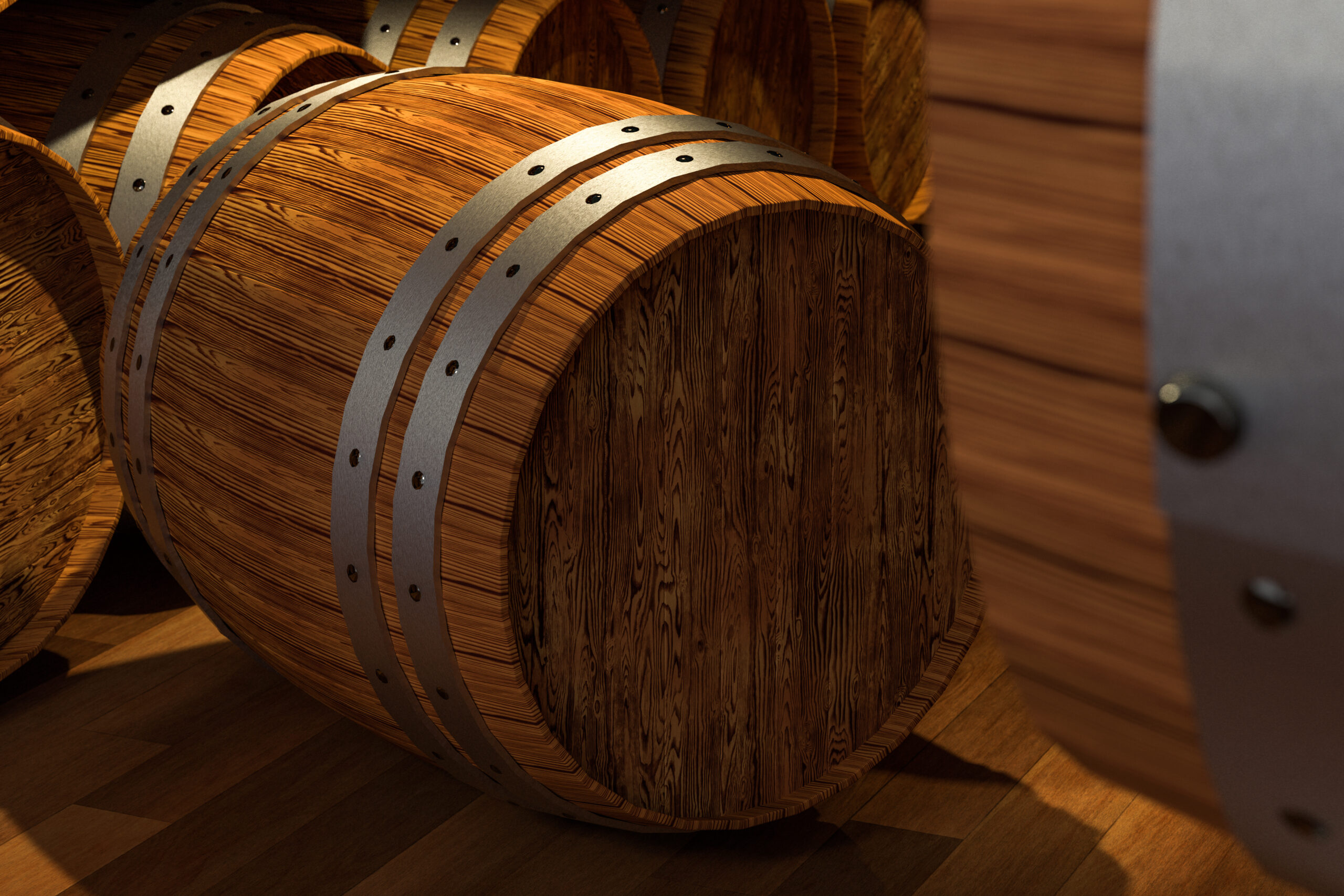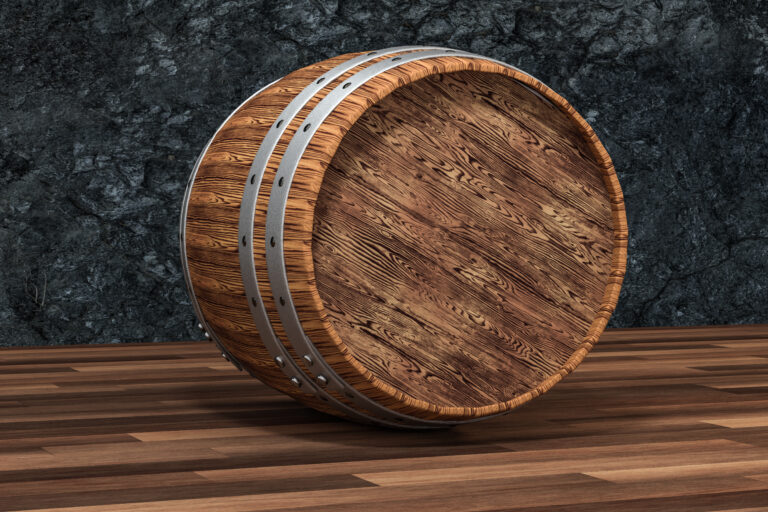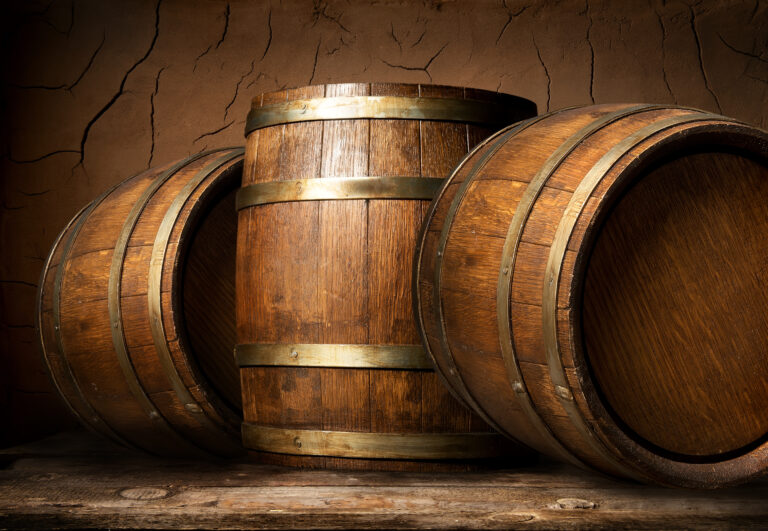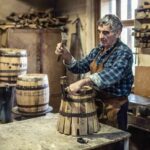Ah, the magic of whiskey, isn’t it? You truly get it – that deep appreciation for the dance of flavors born from years spent slumbering in charred oak. But have you ever really stopped to ponder the journey of that very barrel? It’s more than just a container; it’s a crucial element, almost a co-creator, in coaxing out that perfect symphony of aromas and tastes. Selecting a cask is a genuine art, demanding a seasoned palate and an intuitive feel for how wood and spirit will intertwine over time. The oak variety, the intensity of the char, what the barrel held before – each of these whispers its influence onto the developing whiskey. And let’s not forget the subtle roles of temperature and humidity, gently guiding the whiskey as it draws character from the wood. The coopers, the artisans of the barrel, awaken the wood through toasting or charring, but it’s the master distiller who holds the key, discerning which char level and barrel history will unlock their desired flavor narrative. So, the next time you nose a glass of beautifully aged whiskey and take that first contemplative sip, take a moment to acknowledge the artistry and expertise that went into choosing that specific vessel, the silent partner in crafting that unforgettable drinking experience.
The Foundational Role of Barrel Selection in Whiskey Crafting
When it comes to crafting exceptional whiskey, the barrel isn’t just a vessel – it’s everything. The type of barrel, the precise char level, the number of times it’s been used – these are the core factors that directly sculpt the flavor profile, the enticing aroma, and ultimately, the overall quality of the final spirit.
The Significance of Wood Type
The most revered woods for crafting whiskey barrels are predominantly American white oak (Quercus alba) and European oak. Think of it this way: American oak barrels tend to bestow sweeter nuances, often described as vanilla-forward. On the other hand, European oak barrels lean towards spicier and nuttier flavor contributions. The distiller’s choice of wood is a deliberate one, guided by their vision for the final whiskey characteristics.
The Impact of Char Level
Consider the char level, the degree to which the barrel’s interior is kissed by flame. A gentle light char, with minimal burning, will yield more delicate and subtle flavor notes. Conversely, a heavy char deepens the interaction, resulting in more pronounced smoky notes. Many distillers aim for a medium char, seeking that sweet spot where intensity and complexity find harmony. The duration and heat of the fire within the barrel dictate this crucial char level.
The Influence of Previous Contents
Imagine the legacy held within a used barrel. If it once cradled bourbon or sherry, for instance, it carries those echoes, adding extra layers of flavor to the maturing whiskey. The very first use of a new barrel primarily imparts flavors directly from the wood and the char itself. Subsequent uses introduce nuances from the previous liquid, creating an entirely new sensory journey. Some distillers deliberately seek out barrels with a rich history, multiple previous lives, to achieve extraordinarily intricate whiskey expressions.
When the perfect barrel selection aligns with the distiller’s vision, their artistry truly shines. And for us whiskey enthusiasts, this translates to a delightful spectrum of remarkable drams waiting to be discovered. The nuanced art of barrel selection is undeniably at the very heart of crafting great whiskey.
What Defines an Ideal Barrel for Whiskey Maturation?
The oak barrel stands as the cornerstone of maturing fine whiskey. But not just any barrel will do; the type of wood, its age, and its prior contents all leave their indelible mark on the final flavor profile.
Key Factors in Barrel Idealization
The wood species is paramount. American white oak is highly prized for its ability to impart delightful notes of vanilla and caramel. European oak, in contrast, contributes spicier and fruitier tones. Oak from other regions simply wouldn’t yield the same characteristic results.
The age of the barrel also plays a significant role. New barrels, often referred to as “virgin oak,” possess stronger oak flavors that can sometimes dominate the delicate whiskey. Used barrels, typically aged for 3-5 years, have mellowed, allowing more subtle flavors to emerge and harmonize.
The previous use of the barrel profoundly impacts the flavor. Bourbon barrels tend to impart sweeter undertones, while sherry or port casks bestow richer notes of dried fruit. Some adventurous distillers even experiment with barrels that once held maple syrup, stout, or rum to introduce unique character.
Furthermore, the size and char level are critical considerations. Smaller barrels accelerate the aging process, while larger barrels often yield smoother results. Lightly charred barrels emphasize the wood’s inherent flavors, whereas heavily charred barrels accentuate notes of caramel and vanilla.
Even the location where the barrel is stored during aging and the local climate exert their influence. Cooler conditions slow down the maturation, while warmer weather speeds it up. Barrels aged in coastal environments might even develop subtle briny notes.
With the selection of the perfect barrel, a good whiskey can transcend into something extraordinary. The wood acts as a nurturing vessel, imbuing the spirit with color, aroma, and a complex tapestry of flavor compounds that create a harmonious and multi-dimensional tasting experience. Truly, choosing the right barrel is an art form, the key to unlocking a premium and memorable whiskey.
The Wood – Variables Like Tree Species, Age, and Grain
The very essence of the wood used in crafting a whiskey barrel plays a pivotal role in shaping the flavor, aroma, and color of the final spirit. Several intricate factors determine how the wood will interact with and influence the maturing whiskey.
The Significance of Wood Species
The most prevalent woods for whiskey barrels are, without a doubt, oak, with American white oak and European oak leading the way. American white oak barrels, the standard for bourbon, are known for imparting flavors reminiscent of vanilla, caramel, and even a hint of coconut. European oak barrels, often favored for Scotch, tend to contribute more resinous and spicy flavor characteristics. The choice of wood species alone can dramatically alter the whiskey’s overall taste profile and the specific aroma compounds that develop.
The Impact of Wood Age
The age of the oak, specifically the density reflected in its growth rings, influences the wood’s porosity. A greater number of growth rings indicates denser, less porous wood. Conversely, wood with fewer rings is more porous, allowing the spirit to penetrate deeper, extracting more intense flavors and color. For crafting stronger, more robust whiskeys, distillers might favor older wood with tighter grain. For lighter, more delicate expressions, younger wood allows the spirit’s inherent subtle flavors to shine through.
The Role of Wood Grain
The grain of the wood, ranging from tight to wide, also affects the degree of flavor imparted. A tighter grain presents less surface area for interaction with the spirit, resulting in less extraction. A wider grain, with its more numerous pores and capillaries, facilitates greater extraction of compounds from the wood. Achieving a balance of tight and wide grain might offer an ideal surface area for nuanced flavoring of the whiskey.
By meticulously understanding these wood variables – species, age, and grain – distillers can hand-select barrels precisely tailored to their specific whiskey’s desired aroma, flavor, finish, and color. This intricate art of barrel selection empowers craft distillers to create truly unique and handcrafted spirits.
Char Levels – The Toast Matters
The char level, often referred to as the toast level, describes the extent to which the inside of the barrel has been exposed to flame. This charring process, involving the controlled burning of the barrel’s interior before it’s filled with whiskey, significantly influences the flavors imparted during maturation.
The Subtlety of Light Char
A light char, sometimes labeled a #1 char, involves a gentle toasting with minimal actual burning. This approach tends to add subtle notes of vanilla and a delicate woodiness to the whiskey. This level of char allows the inherent characteristics of both the whiskey and the wood to remain prominent, making it a preferred choice when the distiller wants the spirit’s core flavors to take center stage.
The Balance of Medium Char
A medium char, or #2 char, involves a more pronounced burning that penetrates slightly deeper into the wood. This level imparts more noticeable oak and caramel flavors to the whiskey, working in harmony with its natural profile. Many distillers consider this char level to strike an ideal balance between the wood’s influence and the spirit’s inherent character, making it a popular choice for bourbon.
The Boldness of Heavy Char
A heavy char, often designated as a #3 or #4 char, involves significant burning that deeply affects the wood’s structure. This results in the imparting of bold oaky, smoky, and even roasted flavors to the whiskey. While a heavy char can potentially overshadow the spirit’s more delicate nuances, it is favored by those who appreciate intensely oaky and robust bourbons.
Ultimately, the preferred level of char is a matter of personal taste and the distiller’s artistic vision. Do you seek to highlight the natural flavors of the whiskey, or do you prefer the assertive influence of bold, oak-derived notes? The distiller’s task is to find the char level that perfectly complements their specific whiskey mash bill and aging objectives. By carefully choosing the right char and aging conditions, they can orchestrate a harmonious dram where the wood and spirit resonate together in perfect harmony.
Barrel Size – Impacts Maturation Time and Flavor
The size of the barrel chosen for aging whiskey exerts a significant influence on both the speed at which the spirit matures and the specific flavors it develops over time. Larger barrels, commonly used for aging Scotch and bourbon, offer a greater surface area for the whiskey to interact with the wood. This increased contact typically leads to faster maturation and more pronounced wood-derived flavors, such as vanilla, caramel, and spice.
Conversely, smaller barrels, often favored by craft distilleries, present less surface area, resulting in a slower pace of maturation. The whiskey absorbs flavors from the wood more gradually, leading to lighter and more subtle flavor nuances. Due to the faster extraction in smaller barrels, the whiskey may need to be transferred to a new barrel more frequently to ensure continued development of complexity without becoming overly woody. Some distillers strategically employ a variety of barrel sizes to achieve unique and intricate flavor profiles.
The Interplay of Barrel Size and Maturation
Generally, larger barrels accelerate the maturation process due to the increased surface area contact between the whiskey and the wood. Whiskey aged in smaller barrels may require more frequent transfer to new barrels to maintain a balanced development of flavors and complexity.
- Standard bourbon barrels, with a capacity of 53 gallons, typically yield a mature spirit within 3 to 5 years.
- Smaller barrels, ranging from 5 to 15 gallons, can take double or even triple the time to achieve a comparable level of maturity.
- Some distillers creatively utilize a mix of barrel sizes to craft distinctive and layered flavor profiles in their whiskeys.
The Impact on Flavor Development
Larger barrels tend to impart more robust and pronounced flavors derived from the wood, such as vanilla, cocoa, cinnamon, and nutmeg. In contrast, whiskey aged in smaller barrels often absorbs flavors more subtly, resulting in more delicate notes of apricot, citrus, and floral characteristics.
- Whiskey aged in larger barrels might exhibit intense notes of vanilla, cocoa, cinnamon, and nutmeg.
- Whiskey aged in smaller barrels might showcase more delicate notes of apricot, citrus, and floral flavors.
- The strategic use of a mix of barrel sizes allows distillers to create complex whiskeys with a diverse array of complementary flavors.
Ultimately, the choice of barrel size often boils down to personal preference and the specific style of whiskey the distiller aims to produce. Both large and small barrels have their distinct advantages in crafting a quality and flavorful spirit. The true artistry lies in finding the perfect balance to select the ideal barrel for a particular whiskey.
Ex-Bourbon or New Charred Oak Barrels?
When it comes to the crucial process of aging whiskey, the selection of the barrel type is of paramount importance. It will exert a profound influence on the development of flavor and aroma compounds within the spirit over time. The two most common choices that distillers face are ex-bourbon barrels and new charred oak barrels. So, which path should they choose? Let’s delve into a comparison.
Ex-bourbon barrels, also known as used barrels, have previously served their purpose in aging bourbon. Having already undergone one aging cycle, they tend to impart more subtle oak and vanilla notes to the whiskey. The residual bourbon also leaves behind compounds that interact with the new spirit, contributing flavors like coconut, caramel, and spice. However, because these barrels have been “broken in,” they typically yield lighter and sweeter results.
On the other hand, new charred oak barrels are freshly toasted and charred before being filled with whiskey. As the wood hasn’t yet been exposed to bourbon, it contributes bolder notes of oak, cedar, and sometimes a hint of smokiness. It also allows more of the whiskey’s inherent flavor to shine through. The potential downside is that the intense flavors from new oak can sometimes overpower the spirit’s more delicate nuances. The resulting whiskey may require additional time to mellow and achieve a harmonious balance.
Ultimately, both barrel types possess the potential to produce exceptional and award-winning whiskeys. The choice often comes down to the distiller’s personal preference for the intensity of oak, vanilla, and charred flavors. As a distiller, it’s essential to determine the desired style of whiskey and select barrels that will accentuate the specific qualities being sought. With experience, distillers often become adept at combining ex-bourbon and new charred oak barrels to create the perfect blend of flavors. However, for those just starting out, focusing on one type or the other can be a simpler and more controlled approach.
Regardless of the choice, selecting high-quality barrels and allowing the whiskey to age patiently are fundamental keys to crafting a premium spirit that will be enjoyed for generations to come. The art of barrel selection is indeed a skill well worth mastering.
Used Wine, Sherry, Rum, or Other Spirit Barrels
The practice of using barrels that previously held wine, sherry, rum, or other spirits has become a popular avenue for adding unique complexity to maturing whiskey. The residual flavors and aromas from the previous contents can impart distinct and intriguing notes to the spirit. However, the process of finding the right used barrel demands careful consideration and selection.
Begin by clearly defining the type of influence you desire the barrel to impart. Wine barrels, such as those that held Cabernet Sauvignon or Pinot Noir, will contribute berry and oak notes, while port or sherry barrels often lend nutty and dried fruit characteristics. Rum barrels tend to introduce tropical, molasses-like tones. Carefully consider the desired flavor profile for your finished whiskey.
Thoroughly inspect the condition of the barrel. Look for any signs of leaks or damage, and ensure that the barrel was properly prepared after being emptied. Used barrels should be completely drained, rinsed, and allowed to dry to prevent the growth of unwanted microbes. The age of the barrel will also influence the intensity of the previous spirit’s character – older barrels generally have less of a direct impact.
Whenever possible, sample the barrel. If feasible, obtain a small sample of whiskey that has been aged in a similar barrel. This firsthand experience will provide the best indication of how that particular type of barrel will influence your spirit. Aim for a balanced infusion of the barrel’s influence – noticeable but not overpowering.
Consider the strategic blending of barrels. Utilizing a combination of different used barrels allows for the creation of a custom and intricate flavor profile. For instance, blending wine, sherry, and rum barrels could yield a complex tapestry of fruit, nut, and spice notes. It’s wise to begin with a small test batch to determine the ideal proportions for your desired outcome.
Closely monitor your whiskey’s development. Whiskey aged in used barrels can evolve relatively quickly, so frequent checks on its progress are essential. It might require a shorter maturation period to prevent the barrel’s influence from becoming too dominant. Bottle your whiskey once it achieves a harmonious marriage of barrel and spirit flavors.
While used barrels require extra diligence in finding the perfect match for your whiskey, the resulting rich and complex flavors can be well worth the effort. The nuanced art of choosing the ideal used barrel can make all the difference in crafting a truly memorable whiskey.
Barrel Location and Rotation During Maturation
The specific location where barrels are stored and the practice of rotation during the maturation process have a significant impact on a whiskey’s final flavor profile. As whiskey ages, the liquid extracts various compounds from the wood, contributing notes like vanilla, coconut, and spice. The barrel’s location within the distillery influences environmental factors such as temperature and humidity, which in turn affect the rate of this extraction.
The Significance of Location
In some distilleries, barrels are strategically stored in different warehouses based on the type of wood or the specific spirit they contain. Distillers may even move barrels between warehouses to capitalize on seasonal weather variations. For example, warmer summer temperatures tend to accelerate maturation and extraction, while colder winter weather slows down the process.
The Importance of Rotation
Most distilleries also implement a system of barrel rotation, or turning, during the aging period. This practice ensures that the whiskey comes into contact with different layers of char and wood extractives inside the barrel. The barrel ends, known as the “heads,” have a greater surface area and thus rotate more quickly.
continue
The middle sections, or “bellies,” rotate more slowly.
The implementation of rotation and strategic relocation contributes to consistency between different barrels and batches of whiskey. Without these practices, barrels located near external walls or heat sources would mature at a different rate than those in more stable interior locations. Regular agitation of the barrels also helps prevent sediment from accumulating at the bottom, which could potentially impart undesirable flavors to the whiskey.
Some distilleries elevate barrel rotation and relocation to a sophisticated art form. Certain premium whiskeys are moved through a carefully orchestrated series of barrel “finishing” warehouses, each characterized by a distinct temperature or humidity level, to achieve a precisely defined flavor profile. The specific location, timing, and frequency of these movements are often closely guarded secrets, representing a unique aspect of the distillery’s craftsmanship.
Meticulously controlling the barrel environment and its movement is a key element in crafting a premium whiskey. Even minor adjustments to location or rotation schedules can significantly influence the final taste, aroma, and finish of the spirit. While maturation demands patience, the combination of the right wood in the right place at the right time can elevate a good whiskey to greatness.
The Art of Selecting the Perfect Barrel for Whiskey Maturation – Frequently Asked Questions
The intricate art of selecting the perfect barrel for whiskey maturation involves a thoughtful consideration of several key factors. The type of wood, the intensity of the toast level, and the history of previous use are all critical elements in crafting a high-quality finished product.
Understanding Wood Type
The two most commonly employed woods for crafting whiskey barrels are American white oak and French oak. American white oak is the traditional choice for bourbon, imparting signature flavors such as vanilla, caramel, and spice. French oak barrels, often reserved for aging Scotch whisky, tend to contribute more robust flavor characteristics, including notes of dried fruit, nuts, and even chocolate.
Deciphering Toast Level
The toast level refers to the degree to which the interior of the barrel has been charred. A lighter toast will generally yield more subtle flavor contributions, while a heavier char will impart more pronounced smoky and robust notes. The most common levels encountered are the #3 char, often referred to as the American standard, and the #4 char, frequently used for aging bourbons. Progressively higher char levels continue to build upon the toasted and smoky flavor profiles.
Exploring Previous Use
Barrels that have been previously used to age other spirits, such as bourbon, rum, or sherry, are a popular choice for maturing Scotch whisky. The initial use of the barrel leaves behind flavor compounds within the wood that subsequently influence the maturing Scotch. Bourbon barrels are frequently employed, contributing notes of vanilla and oak. Sherry casks lend flavors of dried fruit, nut, and spice. Utilizing a previously filled cask is a common practice to create a more complex and nuanced whisky.
Ultimately, the specific combination of wood type, toast level, and previous cask use is guided by the distiller’s artistic vision. Do they aspire to create a vibrant, fruity, and spicy whisky, or a rich, smoky, and robust one? The true art lies in selecting barrels that will impart the perfect symphony of flavors to create a memorable and distinctive spirit. Through careful experimentation and patience, distillers can achieve the ideal balance to craft a whisky as unique as their own signature.
Final Thoughts
So there you have it – a concise guide to navigating the world of whiskey barrels and understanding how to select the best vessels to imbue your spirit with the depth of flavor and character you desire. Choosing the right barrel is truly an art form, demanding an appreciation for the transformative power of wood and time as they convert a clear distillate into an amber elixir. By thoughtfully considering the wood type, the intensity of the char level, and the legacy of previous use, you’ll be well-equipped on your journey to aging whiskey that stands out from the crowd. The next time you raise a glass of your carefully crafted spirit, take a moment to acknowledge the craftsmanship and meticulous care that went into sourcing that perfect barrel. Your patience and unwavering attention to detail will be richly rewarded with every complex and satisfying sip. Here’s to you, and to the delicious fruits of your labor!







